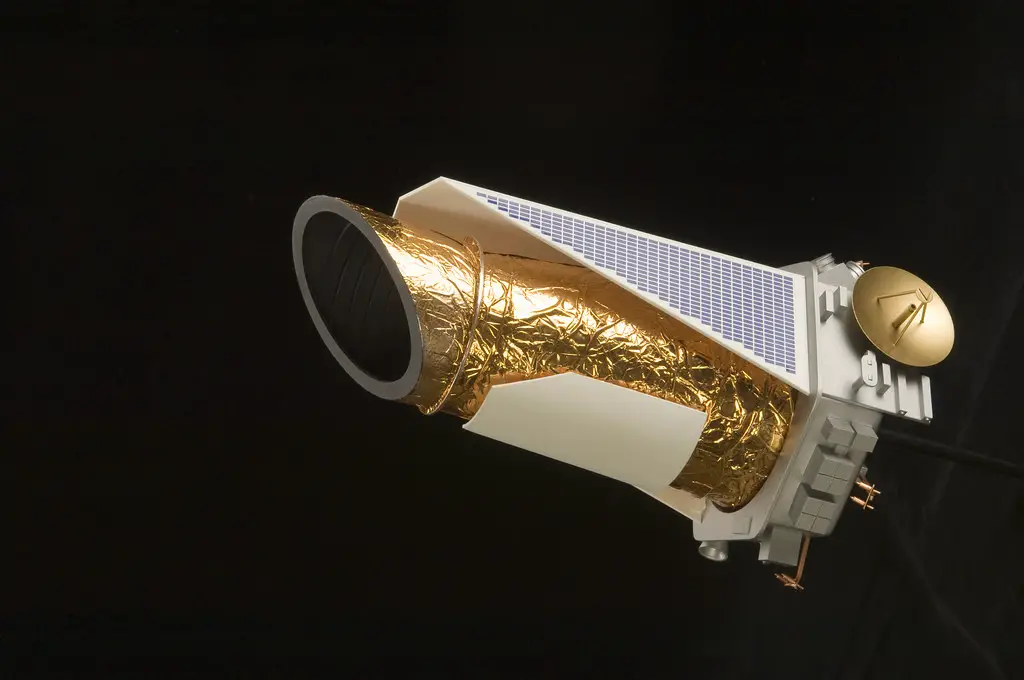The Kepler Telescope has been conducting research since 2009, with one of its main objectives being to search the Milky Way galaxy for planets that have the potential to support life. In 2016, it received data on 1,284 new exoplanets, bringing the total number of verified planets to 3,539. A total of 100 of these exoplanets fall into what are known as the Goldilocks zone – the just right distance from their parent star that would allow liquid water to exist on their surface, which is key to sustaining life as we know it.
What is the Kepler telescope?
The Kepler telescope is a space observatory launched by NASA to discover Earth-like planets orbiting other stars. It’s named after astronomer Johannes Kepler, who made many important contributions to our understanding of planetary motion. The project was approved in 2001 and construction began in 2006; it was launched on March 7, 2009, into an orbit around our sun – not around Earth itself! The first planet discovered was actually a super-Earth—that is, larger than our own planet but smaller than Neptune or Uranus.
How does the telescope find new planets?
The Kepler telescope detects planets by continuously observing more than 100,000 stars at one time. The telescope is sensitive enough to detect drops in light that occur when a planet passes in front of its host star. To date, we’ve found thousands of exoplanets with Kepler and it has detected Earth-sized planets orbiting within their stars’ habitable zones, where liquid water could exist on their surfaces. It has also been used to find hundreds of new candidate planets for follow-up studies.
What type of planets does it discover?
Kepler telescope is an American Space observatory that was launched into low-Earth orbit to discover Earth-size planets orbiting other stars. The telescope’s primary mission lasted from May 2009 to November 2013, when its second reaction wheel failed. In 2014, a new mission called K2 was launched with assistance from SpaceX.
Why are these newly discovered planets special?
In July of 2017, astronomers discovered 1,284 new planets around stars near our own sun. Of these newfound worlds, nine have a better chance than most of being like our own planet — with surface temperatures that allow liquid water to pool and sustain life.
How many planets are there in total found by this telescope?
The spacecraft has found over 4,000 potential planets to date. Many of them will be confirmed in months and years to come, but astronomers have confirmed well over 100 planets so far. These include nine within our own solar system! This is a relatively small number compared to what’s out there. The galaxy contains billions of stars like our Sun, and each star can have multiple planets; current estimates put that number between 10 and 30 billion planets in our galaxy alone!
Will there be a follow-up study on these new planets?
Kepler only studies a small sample of our galaxy, and it’s possible there are far more planets out there that have not yet been detected. NASA is planning to build an exoplanet-hunting telescope called TESS, which stands for Transiting Exoplanet Survey Satellite. It will survey 200,000 stars in orbit around Earth’s sun. This will let us detect far more planets than Kepler could—and hopefully ones even more similar to ours.
If so, who will carry out this follow-up study?
NASA’s Jet Propulsion Laboratory, Pasadena, Calif. (NASA) — After more than two years of gathering data, NASA’s Kepler mission has found 1,235 new planet candidates. Of these, 68 are approximately Earth-size and lie in their star’s habitable zone — meaning they could have water at their surface and thus an environment suitable for life. A terrestrial planet is defined as a planet with a mass similar to Earth’s that orbits a star in our solar system like our sun.
What can we learn from this discovery?
The Kepler space telescope may be low on fuel, but its latest discovery—some 1,284 new planets—will undoubtedly continue to change our understanding of what a planet is and how many we inhabit. The study, conducted in part by Stanford University scientists, was published yesterday in The Astrophysical Journal. And it’s exciting for two reasons: First, it finds that at least one-fifth of all stars have potentially habitable planets—meaning there are billions more planets out there waiting to be discovered.
What will the next steps be after finding new planet candidates?
After finding a candidate planet, NASA’s Kepler spacecraft will check to see if there is a transit. If there is, follow-up observations will be needed to confirm that it really is a planet. At that point, astronomers will look for more information about the planet, including its mass and density. As of now, we know nothing about these exoplanets except for their size and distance from their host star.
![]()
